Whale sharks, the magnificent creatures of the sea, never fail to captivate and inspire awe. As the largest fish species in the world, they possess a unique set of characteristics that set them apart.
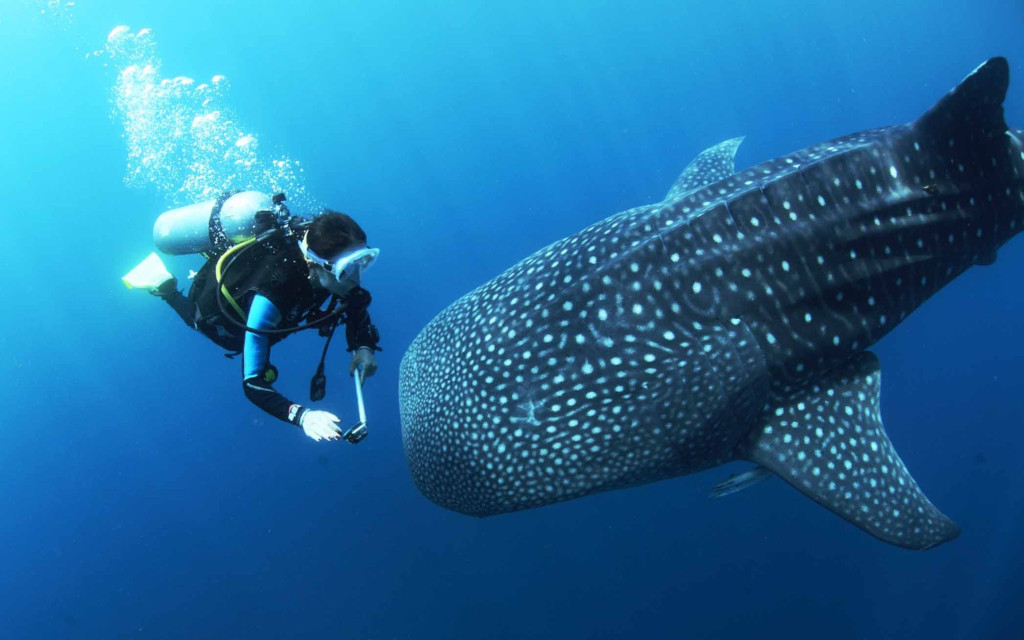
In this article, we dive into the fascinating world of whale sharks, uncovering interesing facts about their appearance, migration patterns, social behavior, reproduction, feeding habits, and more. Let’s embark on a journey of discovery and unravel the wonders of these gentle giants.
Diving with whale sharks: Appearance and Size-Physical Characteristics of Whale Sharks
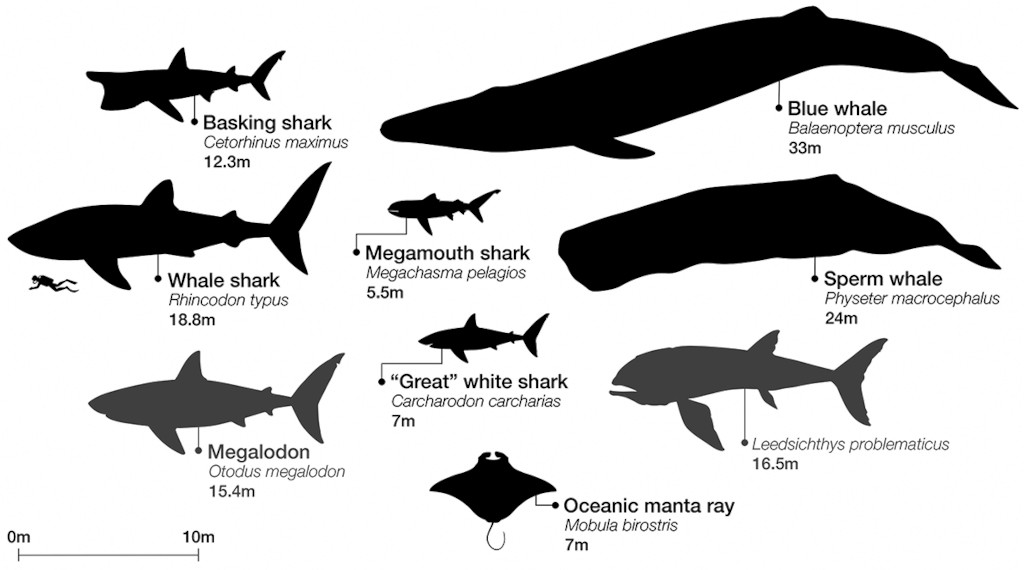
One glance at a whale shark is enough to leave anyone speechless. These creatures boast a distinctive appearance with their massive size and captivating features.
From their wide mouths, adorned with rows of small teeth, to their mesmerizing pattern of pale spots and stripes, each whale shark has a unique identity. Their colossal size, often exceeding 40 feet in length, makes them true oceanic giants, inspiring both reverence and awe in those fortunate enough to witness them up close.
Journeying Across the Seas: Unraveling the Migration Patterns of Whale Sharks
The migration patterns of whale sharks encompass some of the most awe-inspiring journeys in the animal kingdom. These majestic creatures traverse vast distances across oceans, following seasonal shifts and environmental cues. Their migrations often revolve around food availability, temperature variations, and reproductive needs. Scientists are constantly studying these patterns to gain a deeper understanding of the factors that influence the movements of these gentle giants, unraveling the secrets of their epic journeys.
Solitary Giants: Understanding the Social Behavior of Whale Sharks
Despite their immense size, whale sharks are typically solitary beings. They navigate the vast expanses of the ocean alone, rarely forming social groups or engaging in coordinated behaviors. However, there have been rare instances where small groups of whale sharks have been observed feeding together in areas of abundance. The reasons behind these gatherings remain a subject of ongoing research, shedding light on the complexities of their social behavior.
Life and Reproduction: Insights into the Breeding and Life Cycle of Whale Sharks
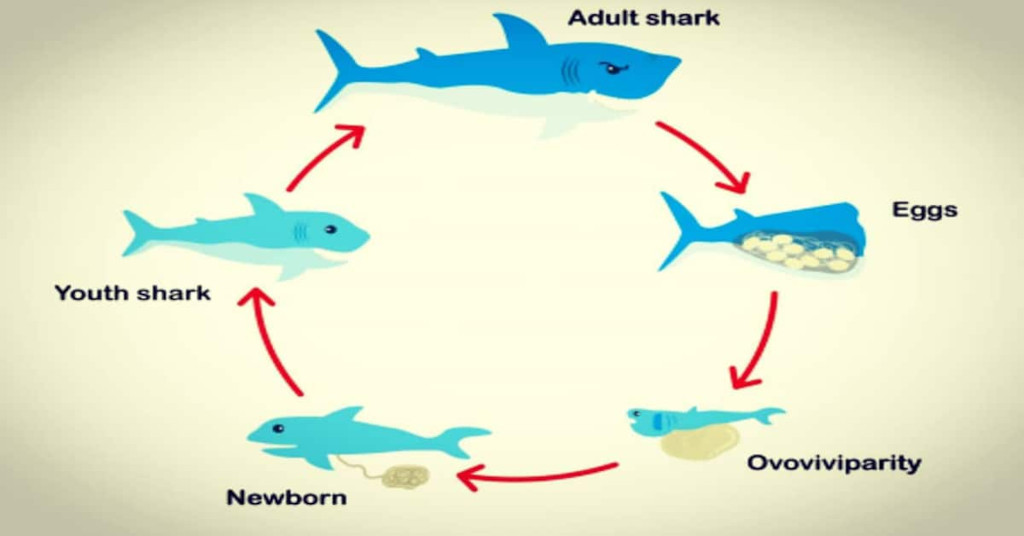
The life and reproduction of whale sharks remain a topic of fascination and intrigue. While much about their reproductive habits is still shrouded in mystery, scientists have made significant strides in understanding their breeding and life cycle.
Whale sharks are ovoviviparous, with females giving birth to live young after the internal hatching of eggs. The gestation period and the number of offspring produced by each female are areas of ongoing research, contributing to our understanding of the remarkable journey from birth to adulthood for these gentle giants.
Lifespan of Whale Sharks: How Long Do They Live?
The longevity of whale sharks is a subject of great interest to scientists. Although determining their exact age is challenging, estimates suggest that these creatures can live for several decades. Some studies indicate a lifespan of 70 to 100 years, emphasizing the significance of these animals as long-term contributors to the marine ecosystem. Understanding their lifespan provides valuable insights into their ecological role and underscores the importance of their conservation.
Marvels of Filter-Feeding: Unveiling the Feeding Habits of Whale Sharks
Whale sharks are masters of filter-feeding, employing an ingenious method to nourish themselves.
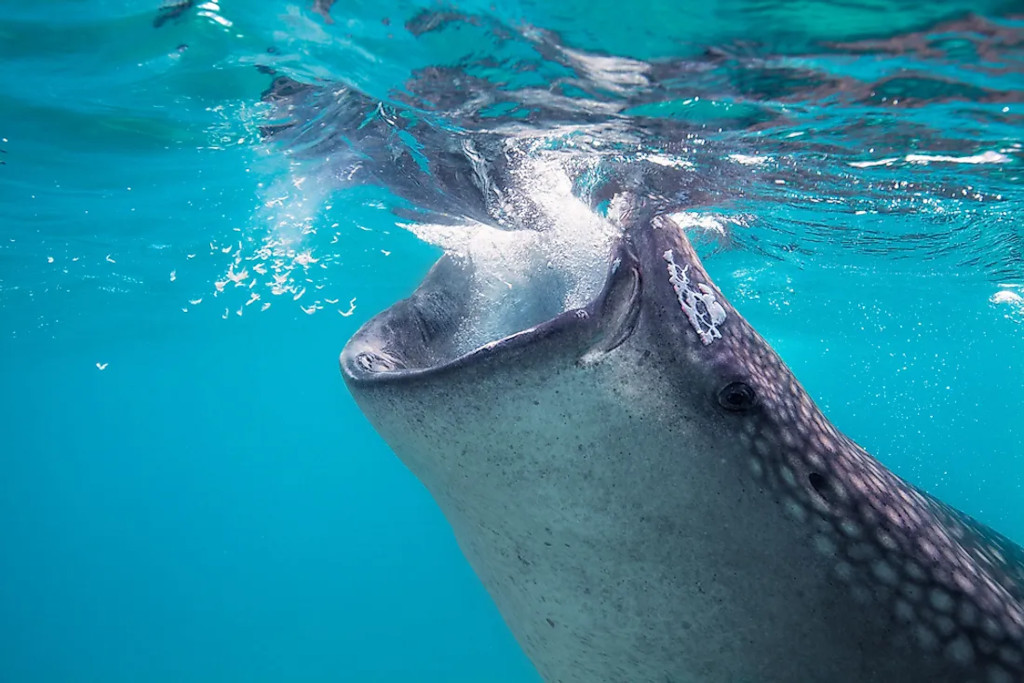
With their colossal mouths, they engulf large volumes of water, capturing plankton, small fish, and other microscopic organisms. Specialized filtering pads called gill rakers allow them to separate the nutritious particles from the water. Ensuring an efficient feeding process. This remarkable adaptation enables whale sharks to consume several tons of plankton daily, playing a vital role in maintaining the balance of marine ecosystems.
Conservation Status: Safeguarding a Vulnerable Species
The conservation status of whale sharks is a matter of grave concern. The International Union for Conservation of Nature (IUCN) classifies them as endangered, underscoring the urgent need for protective measures. These gentle giants face numerous threats, including habitat degradation, pollution, entanglement in fishing gear, and the illegal hunting for their fins and other body parts. Conservation efforts focus on establishing protected areas, implementing regulations, and raising awareness to safeguard their future.
Natural Predators of Whale Sharks: Do They Have Any?
While adult whale sharks have few natural predators due to their immense size, younger individuals may fall prey to larger sharks or marine mammals. Orcas, also known as killer whales, have been observed preying on young whale sharks on rare occasions. However, such predation events are infrequent, and the overall population of whale sharks is not significantly affected by natural predators.
Ecotourism’s Significance: Recognizing the Importance of Sustainable Tourism
Ecotourism plays a pivotal role in raising awareness and supporting the conservation of whale sharks. Responsible and sustainable tourism practices offer unique opportunities for people to experience these majestic creatures while contributing to their protection. Well-regulated ecotourism activities, such as snorkeling or diving alongside whale sharks, provide financial incentives for local communities, foster conservation efforts, and promote a deeper understanding of the significance of preserving marine ecosystems.
Global Distribution: Are Whale Sharks Present in All Oceans?
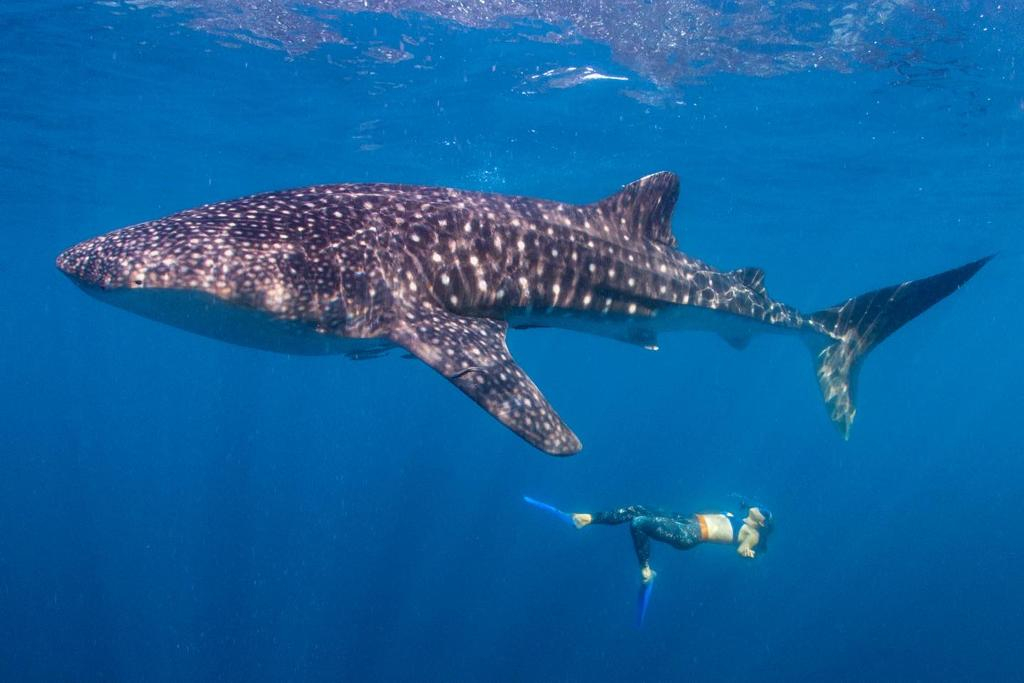
Whale sharks boast a global distribution, inhabiting tropical and warm-temperate oceans worldwide. They can be found in all major oceans, including the Indian Ocean, Pacific Ocean, Atlantic Ocean, and the Arabian Sea. Their preferred habitats include coastal waters, coral reefs, and upwelling zones with abundant plankton. Remarkable locations such as the Ningaloo Reef in Australia, the Maldives, the Philippines, and the Gulf of California are renowned hotspots where encounters with whale sharks are more common.
Best most famous places in the world to dive with whale sharks
Ningaloo Reef, Australia
Located off the Western Australian coast, Ningaloo Reef is one of the most accessible and popular places to encounter whale sharks. The annual migration from March to July attracts these gentle giants, providing divers with extraordinary opportunities to swim alongside them in the crystal-clear waters.
Oslob, Philippines
Oslob in the Philippines has gained fame for its unique whale shark encounter. Local fishermen have established a feeding program, drawing whale sharks close to the shore. Snorkelers can observe and swim with these massive creatures, creating unforgettable memories.
Maldives

The Maldives, a tropical paradise in the Indian Ocean, is renowned for its vibrant marine life. The southern atolls, such as Ari and Baa, are known for their resident population of whale sharks. Divers can experience thrilling encounters while exploring the coral reefs and atoll channels.
Isla Holbox, Mexico
Situated off the Yucatan Peninsula, Isla Holbox is a haven for whale shark encounters. From June to September, large aggregations of whale sharks gather here to feed on plankton. Divers and snorkelers have the opportunity to swim alongside these gentle giants in the turquoise waters of the Caribbean Sea.
Djibouti
In the Gulf of Tadjoura, off the coast of Djibouti in East Africa, lies one of the most unique places to dive with whale sharks. Every year between November and February, these magnificent creatures congregate in large numbers. Diving in Djibouti offers a rare chance to observe whale sharks in a breathtaking setting.
Gladden Spit, Belize
Gladden Spit, part of the Belize Barrier Reef Reserve System, is another remarkable destination for encountering whale sharks. During the full moon from March to June, whale sharks gather to feed on the eggs of spawning cubera snappers. Divers and snorkelers can witness this extraordinary event and swim alongside these gentle giants.
Best places in Costa Rica to dive with the whale shark
Costa Rica offers incredible opportunities to dive with whale sharks. There are notable locations where encounters with whale sharks are possible.
Here are some of the best places in Costa Rica to dive with whale sharks.
Isla del Caño- Cano Island
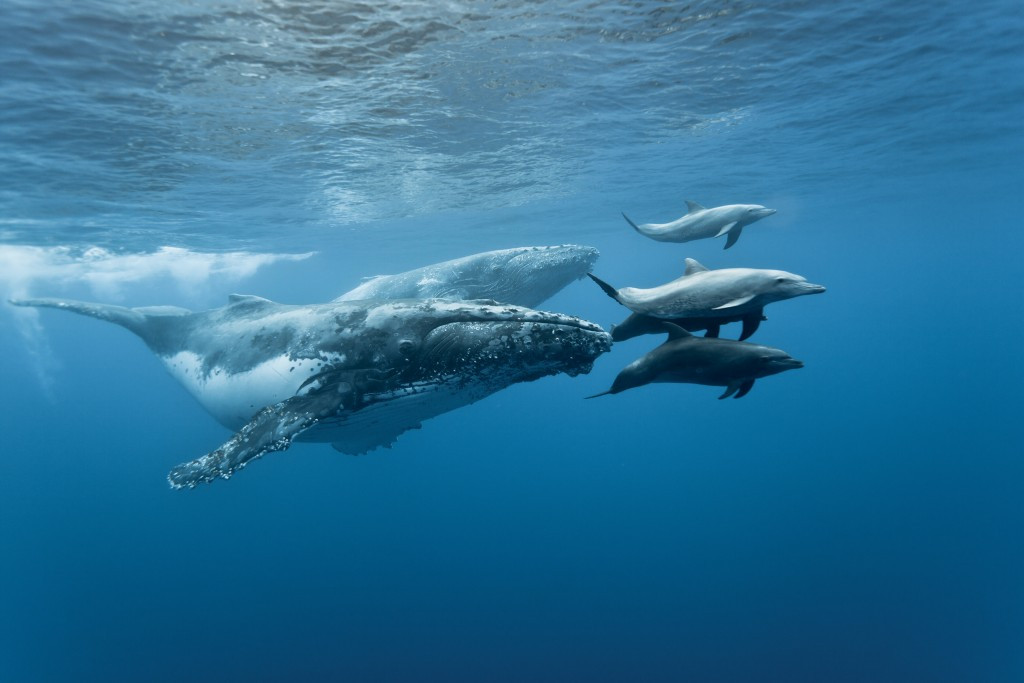
Located off the southwestern coast of Costa Rica, Isla del Caño is renowned for its marine diversity. While sightings of whale sharks are sporadic, lucky divers have occasionally encountered them in the surrounding waters. The island is also home to vibrant coral reefs, making it a fantastic diving destination in general.
Bat Islands (Isla Murciélago)
Situated in the Guanacaste province, the Bat Islands are known for their encounters with bull sharks, but whale sharks have been spotted in this area as well. Diving here provides the opportunity to witness both of these impressive species, along with other marine life.
Isla de Coco (Cocos Island)
Designated as a UNESCO World Heritage site, Isla de Coco is a remote and pristine island located around 340 miles (550 kilometers) off Costa Rica’s Pacific coast. Although diving at Cocos Island is primarily known for encounters with hammerhead sharks and other pelagic species, there have been rare sightings of whale sharks in the area.
Research and Education: The Crucial Role in Understanding Whale Sharks
Research and education are fundamental pillars in deepening our understanding of whale sharks and formulating effective conservation strategies. Scientists employ various methods such as satellite tagging, photo-identification, and genetic analysis to study their behavior, migration, and population dynamics. By expanding our knowledge, we can develop informed conservation plans, promote sustainable practices, and educate communities about the importance of protecting these magnificent creatures.
Tracking Movements: How Researchers Monitor Whale Shark Migration
Tracking the movements of whale sharks is possible through advancements in technology and innovative research methods. One commonly used approach involves attaching electronic tags to the dorsal fins of whale sharks. These tags transmit valuable data such as location, depth, and water temperature to satellites, allowing researchers to monitor the movements of individual whale sharks over extended periods. Photo-identification techniques based on unique spot and stripe patterns also aid in tracking and studying these magnificent creatures.
Concerns of Captivity: Examining the Presence of Whale Sharks in Aquariums
The topic of captivity for whale sharks in aquariums sparks a significant debate. While some argue that aquariums provide educational opportunities and raise awareness about marine conservation, others express concerns about the ethical implications of confining these large, highly migratory creatures. Whale sharks have specific habitat requirements, including vast swimming distances and ample food sources, which can be challenging to replicate in captivity. As a result, the focus is shifting towards promoting responsible ecotourism and protecting their natural habitats instead.
Swimming with Whale Sharks: An Unforgettable Experience
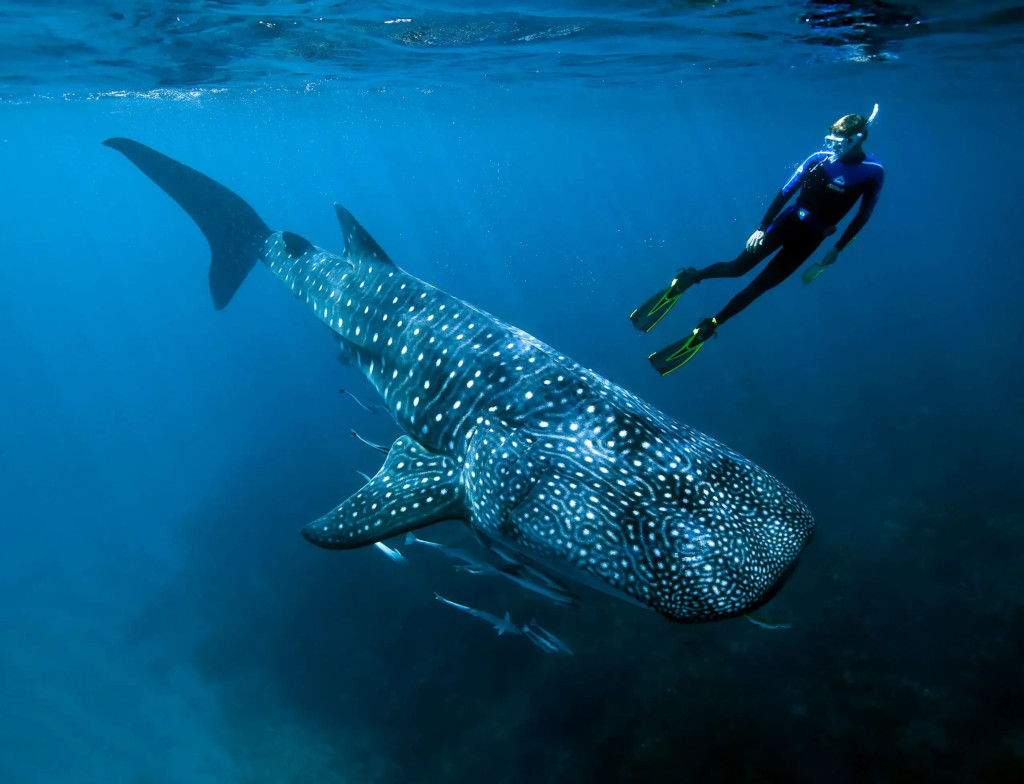
Swimming with whale sharks is a once-in-a-lifetime experience that leaves an indelible mark on those fortunate enough to participate. Several destinations around the world offer guided tours and snorkeling or diving opportunities to swim alongside these gentle giants. Stringent regulations and guidelines are in place to ensure the safety of both the whale sharks and the visitors. Swimming with these magnificent creatures allows for a profound connection with nature, providing an opportunity to witness their graceful movements, appreciate their size and beauty, and develop a deep sense of respect and awe for the wonders of the marine world.
Myths and Misconceptions: Dispelling Misunderstandings about Whale Sharks
Whale sharks have long been surrounded by myths and misconceptions, leading to misunderstandings about their behavior and characteristics. One common myth is that they are dangerous predators. In reality, whale sharks are gentle filter-feeders, subsisting solely on plankton and small fish. They pose no significant threat to humans and have a docile nature. Another misconception is that they are whales due to their name, when, in fact, they are part of the shark family. It is crucial to dispel these myths and educate the public about the true nature of whale sharks, fostering a deeper understanding and appreciation for these magnificent creatures.
Summarizing
Whale sharks are truly remarkable creatures that inspire wonder and awe in those who encounter them. Their immense size, gentle nature, and unique characteristics make them a symbol of the majesty of the ocean. By exploring their facts, appearance, migration patterns, social behavior, reproduction, feeding habits, and more, we gain a deeper appreciation for these gentle giants and the urgent need to conserve and protect them. Through responsible tourism, research, education, and dispelling myths, we can ensure the preservation of whale sharks for future generations. To marvel at and admire them.
